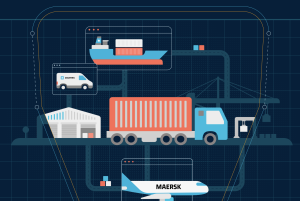Part 8 of a ten-part series that examines key operational aspects of the so-called “Purchase to Pay” value chain
by Independent Contributor, Peter Alkema – Head: Purchase to Pay at ABSA
“The request was authorised, the Purchasing Order (PO) was created and communicated to the supplier, and now the goods or services are expected to be delivered….”
Previous articles in this series have dealt with these important steps in the Purchase-to-Pay process. (See Part 2 for catalogues, Part 3 for requests and approvals, Part 5 for a breakdown of the types of PO, and Part 7 for the pros and cons of two- or three-way matching). For any first time users of an online shopping website there is the inevitable question as to whether anyone out there has actually received the order, and is busy packing and shipping the goods. Fortunately in the corporate world, money is generally only paid over once the goods and services are received in good order. However, there still remains the question about the supplier process and the actual fulfilment leg of the value chain.
Typically for organisations using an Enterprise Resource Planning (ERP) purchasing system, such as SAP SRM, this data will be a few clicks away. However, the level of detail about any given order will still vary dramatically. For suppliers who are strictly managed according to Service Level Agreements (SLAs) and turnaround times, a high degree of certainty is associated with the delivery times specified on the PO. For once-off and infrequently used suppliers, there will be some uncertainty and generally delays in the fulfilment of goods and services. This is simply because the supply chain from the supplier’s supplier to the customer’s customer never works perfectly the first time and thus needs constant oiling and improving. Generally techniques and methodologies such as Lean Six Sigma and Total Productivity Measurement can go a long way to optimise the supply chain, but it often comes down to the customer’s relationship with the supplier.
“A significant advantage can be gained from centralising the buying process into a call centre team. While this works against the conventional wisdom of providing users with a fully self-sufficient capability in a system, such as Supplier Relationship Management, a number of large organisations have already derived huge benefits from a strategy of centralisation”, Peter Alkema, Head: Purchase to Pay, ABSA, told to SmartProcurement. In a bank, for example, the branch administrator who is responsible for ordering supplies will have their hands full with numerous systems and processes for other functions. Spending only a small percentage of their time on the ordering system will mean they never reach proficiency in understanding and optimising their supply chain of goods and services. Centralising this function to a team of dedicated buyers who do nothing else but process shopping carts, purchase orders and follow up with suppliers creates a core capability that can provide a service back to anyone in the organisation. It also frees up the branch personnel to spend more time with customers and drive front office revenue – a much needed advantage in a slowing economy.
Often there are legitimate and unforeseen problems that creep in to any supply chain or purchasing process, no matter how well designed and optimised. Incorrect data entry or faulty system information, such as address details, can cause significant and frustrating delays which sometimes require expert intervention to resolve. Any system or process is only as good as the data that is entered into it and the level of training of the people making use of it. If the shopping cart is captured with attachments and comprehensive notes, then anyone subsequently interrogating the complete order will have a full history available. This is also an imperative for audit purposes so that approvals can be fully supported with documentation giving evidence of decision making. A system such as SAP SRM supports this capability, but the organisation needs to be mature enough and willing to preserve such an audit trail. The centralised purchasing team also provides for a ring-fenced team within which such processes and procedures can be rolled out with a higher degree of repeatability in execution.
Anybody who has ordered anything naturally wants to know the status of their order. A disciplined approach to using a purchasing system is just as important as having the functionality in that system that can track and trace where the order currently is in the supply chain. Companies such as UPS, Dell and Walmart have set global standards in data-rich supply chains. Mature systems and processes such as in these organisations are often beyond the reach of most companies. Nonetheless, world class operational procurement will always be characterised by quick and efficient ways of understanding (and predicting) the flow and progress of goods and services from supplier to customer. Of course, money will flow in the opposite direction from customer to supplier, and that will be the subject of the pen-ultimate article in this ten part series on achieving World Class Operational Procurement.


























